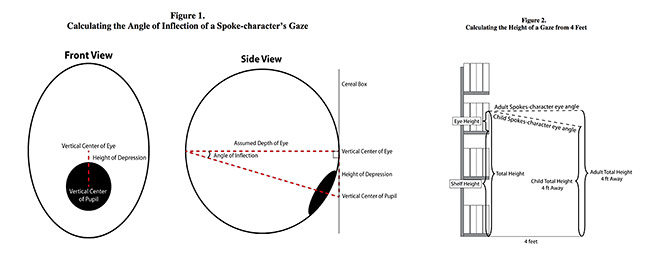visual design
We explore how product images and color in business plans influence venture investment screening decisions. Because images are accessible, memorable, and influential, we argue that product images in a business plan will increase the likelihood of favorable judgments during screening decisions. Moreover, because red and blue automatically affect an individual’s cognition in different manners such that red elicits negative associations and blue elicits positive ones from the evaluators, we predict that the use of red in a business plan will decrease the favorability of judgments during screening decisions, while the use of blue will increase their favorability.
{ Journal of Business Venturing | Continue reading }
colors, economics, guide | February 11th, 2015 11:59 am

Monozygotic twins are considered being genetically identical, therefore they cannot be differentiated using standard forensic DNA testing. Here we describe how identification of extremely rare mutations by ultra-deep next generation sequencing can solve such cases. We sequenced DNA from sperm samples of two twins and from a blood sample of the child of one twin. Bioinformatics analysis revealed five single nucleotide polymorphisms (SNPs) present in the twin father and the child, but not in the twin uncle.
Our results give experimental evidence for the hypothesis that rare mutations will occur early after the human blastocyst has split into two, the origin of twins, and that such mutations will be carried on into somatic tissue and the germline. The method provides a solution to solve paternity and forensic cases involving monozygotic twins as alleged fathers or originators of DNA traces.
{ FSI Genetics }
genes, halves-pairs | January 5th, 2015 3:27 pm
halves-pairs, marketing | December 22nd, 2014 12:00 pm
fashion, sex-oriented | December 16th, 2014 11:48 am
tattoos | November 12th, 2014 3:57 am

In a series of 7 experiments we demonstrate that women perceive men to be more attractive and sexually desirable when seen on a red background and in red clothing. […] The influence of red appears to be specific to women’s romantic attraction to men: Red did not influence men’s perceptions of other men, nor did it influence women’s perceptions of men’s overall likability, agreeableness, or extraversion.
{ APA PsycNet | Continue reading }
colors, psychology, relationships | November 7th, 2014 2:02 pm
Antonioni, photogs, visual design | September 26th, 2014 11:17 pm
asia, visual design | July 28th, 2014 1:29 am
genes, halves-pairs | July 15th, 2014 4:03 pm

{ 1 | 2 }
halves-pairs | June 18th, 2014 12:21 pm

{ During the 1950s, with vinyl scarce, Russians began recording rock ‘n’ roll, jazz and boogie woogie on used X-rays that they gathered from hospitals and doctors’ offices. | NPR | full story }
flashback, music, visual design | June 3rd, 2014 3:17 pm

Paul Ingrisano, a pirate living in Brooklyn New York, filed a trademark under “Pi Productions” for a logo which consists of this freely available version of the pi symbol π from the Wikimedia website combined with a period (full stop). The conditions of the trademark specifically state that the trademark includes a period.
The trademark was granted in January 2014 and Ingrisano has recently made trademark infringement claims against a massive range of pi-related designs on print-on-demand websites including Zazzle and Cafepress.
Surprisingly, Zazzle accepted his claim and removed thousands of clothing products using this design.
{ Jez Kemp | Continue reading }
law, scams and heists, visual design | June 1st, 2014 7:00 am

Behind the scenes of the NY redesign
That includes using Github instead of SVN for version control, Vagrant environments, Puppet deployment, using requireJS so five different versions of jQuery don’t get loaded, proper build/test frameworks, command-line tools for generating sprites, the use of LESS with a huge set of mixins, a custom grid framework, etc.
{ Source | Continue reading }
press, technology, visual design | May 11th, 2014 3:16 pm

Why were old scientific instruments put together with an apparent wish to make them beautiful, and not just coldly functional?
First, there is obviously a selection effect at work here of the kind that all historians and curators are familiar with. What tends to get preserved is not a representative cross-section of what is around at any time, but rather, what is deemed to be worth preserving. […]
Second, there were of course no specialized scientific-instrument manufacturers in the early modern period. When investigators like Galileo and Boyle wanted something made that they could not make themselves, they would go to metalsmiths, carpenters, potters and the like, who inevitably would have brought their own craft aesthetic to the objects they made.
[Third,] they were catering to a particular clientele that their products reflected. Reeve was making microscopes and so forth for the wealthy dilettantes. […] Scientific instruments were used to delight and entertain their noble patrons. […] For such a display, it was important that a device be impressive to look at.
{ Philip Ball | Continue reading }
flashback, science, technology, visual design | May 9th, 2014 1:48 pm
flashback, visual design | April 29th, 2014 2:42 pm


{ Why the Trix Rabbit Looks Down on You | FiveThirtyEight | full story }
marketing, visual design | April 3rd, 2014 3:27 pm

{ Traditional rug-making techniques meet contemporary political imagery | full story }
asia, economics, visual design | March 27th, 2014 10:53 am
crime, visual design | March 3rd, 2014 9:12 am
asia, costumes | February 18th, 2014 8:52 am
health, visual design | February 6th, 2014 7:14 am


























